June 2022
Real Regulatory Tips and Insights
Please find below a roundup of our weekly Regulatory Tips and Insights from our Regulatory experts on our Real Regulatory LinkedIn page. The tips we published in June 2022 are collected here, for convenience. Make sure you follow Real Regulatory Ltd and Real CMC for regulatory news, reports and hints.
Clinical Trials Comparators
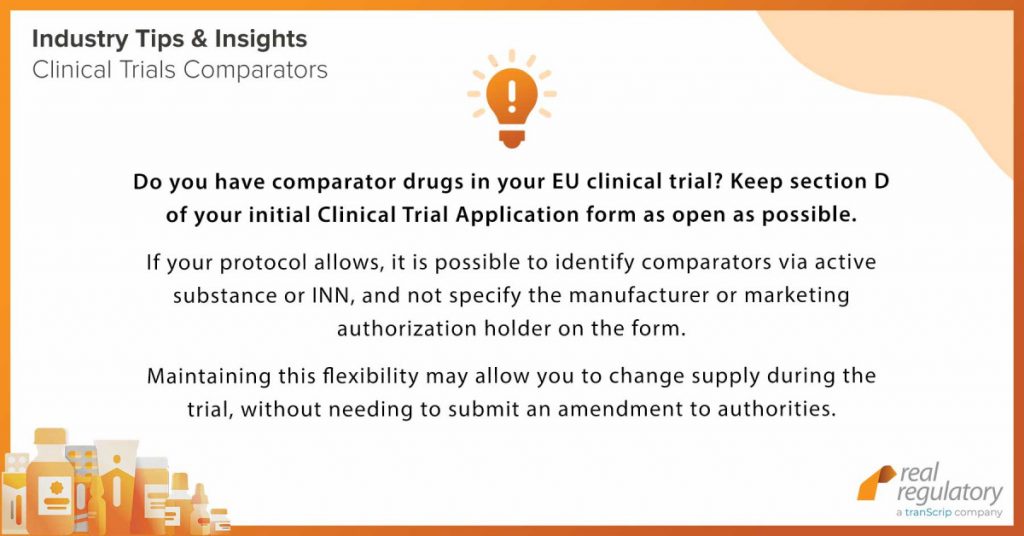
Marketing Authorisation Application Form
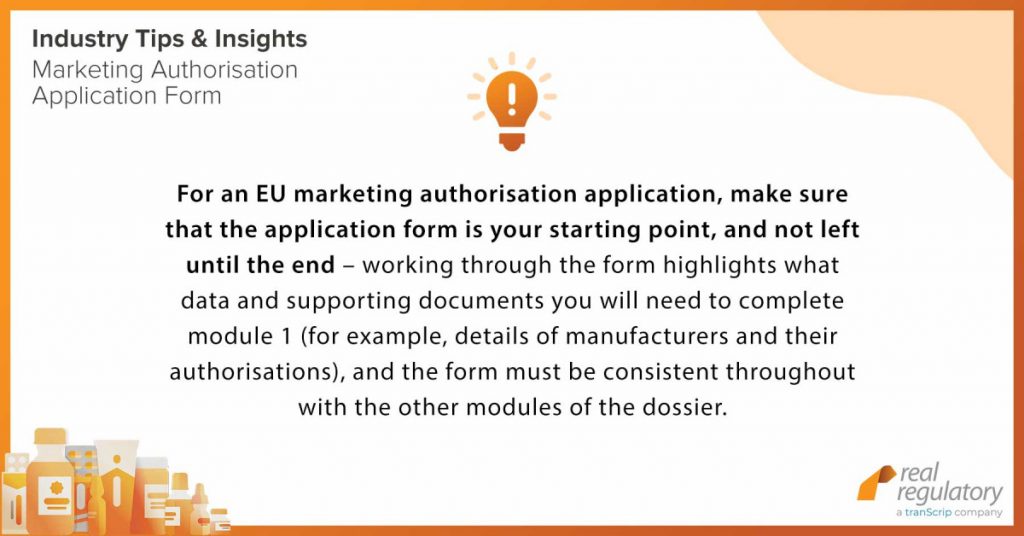
May 2022
Real Regulatory Tips and Insights
Please find below a roundup of our weekly Regulatory Tips and Insights from our Regulatory experts on our Real Regulatory LinkedIn page. The tips we published in May 2022 are collected here, for convenience. Make sure you follow Real Regulatory Ltd and Real CMC for regulatory news, reports and hints.
Clinical Study Reports and the ICH Template
https://database.ich.org/sites/default/files/E3_Q%26As_R1_Q%26As.pdf
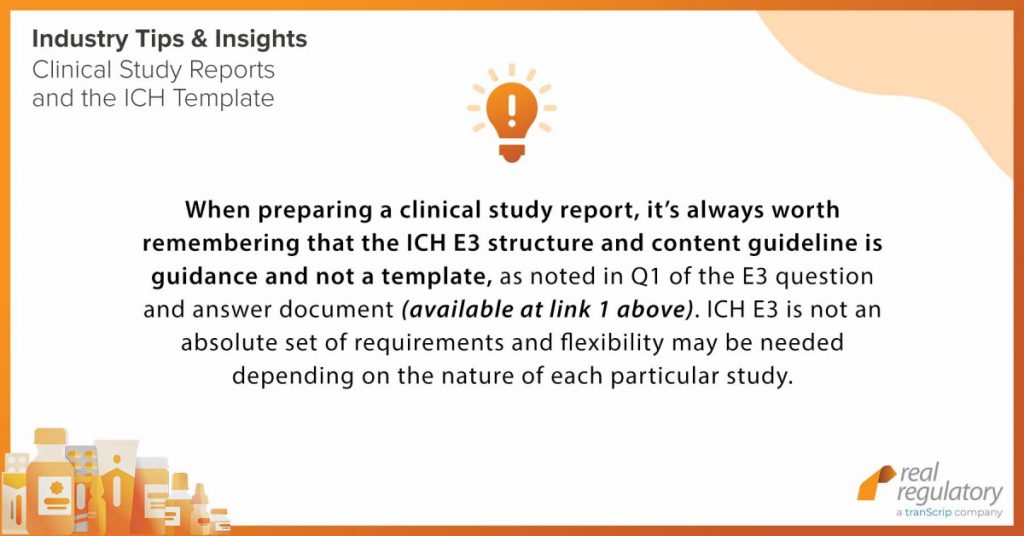
Clinical Trials: Substantial Amendments
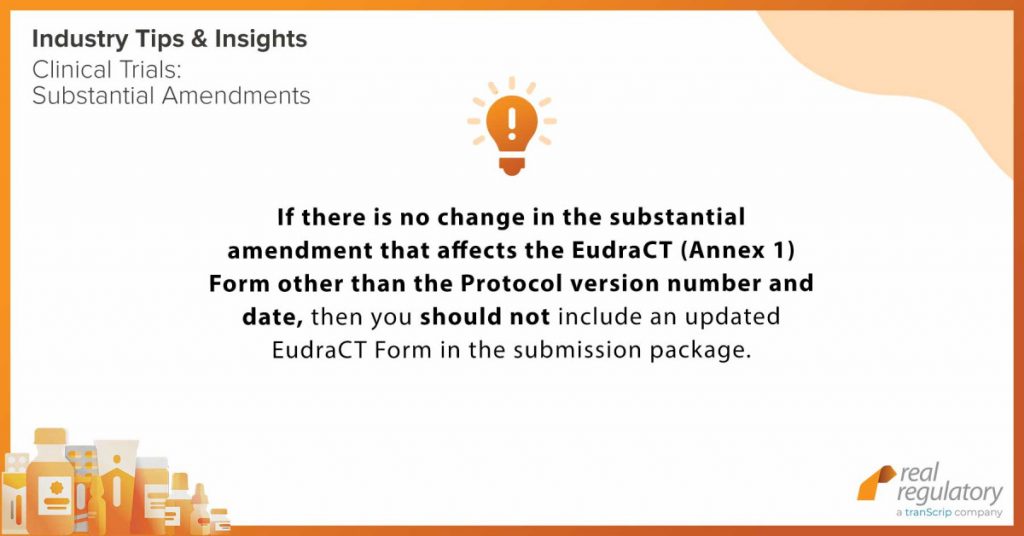
EMA Guidance on CSR Signatures and Appendices
https://www.ema.europa.eu/en/documents/scientific-guideline/note-guidance-inclusion-appendices-clinical-study-reports-marketing-authorisation-applications_en.pdf
https://www.ema.europa.eu/en/documents/scientific-guideline/note-guidance-coordinating-investigator-signature-clinical-study-reports_en.pdf
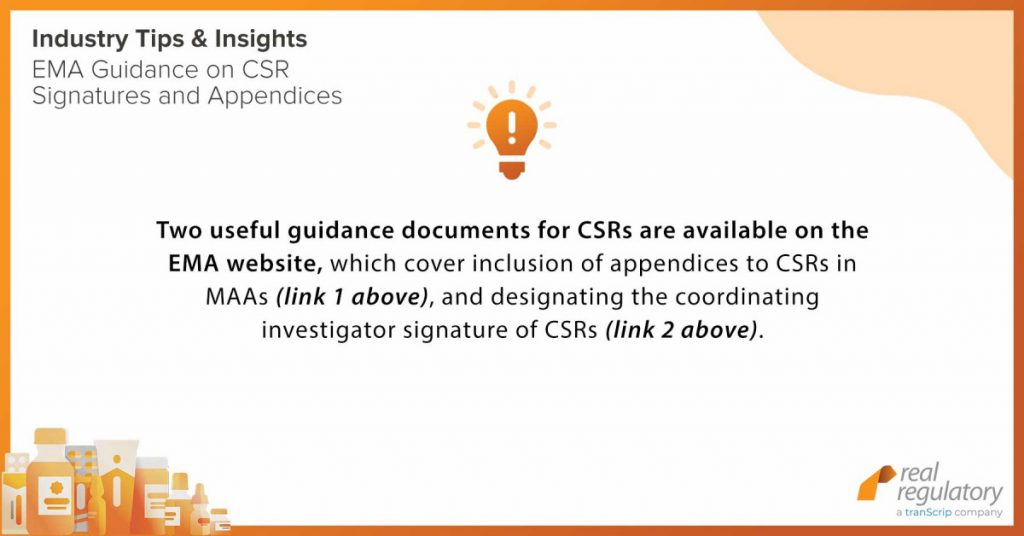
EMA QRD Guidance Documents
https://www.ema.europa.eu/en/human-regulatory/marketing-authorisation/product-information/product-information-reference-documents-guidelines
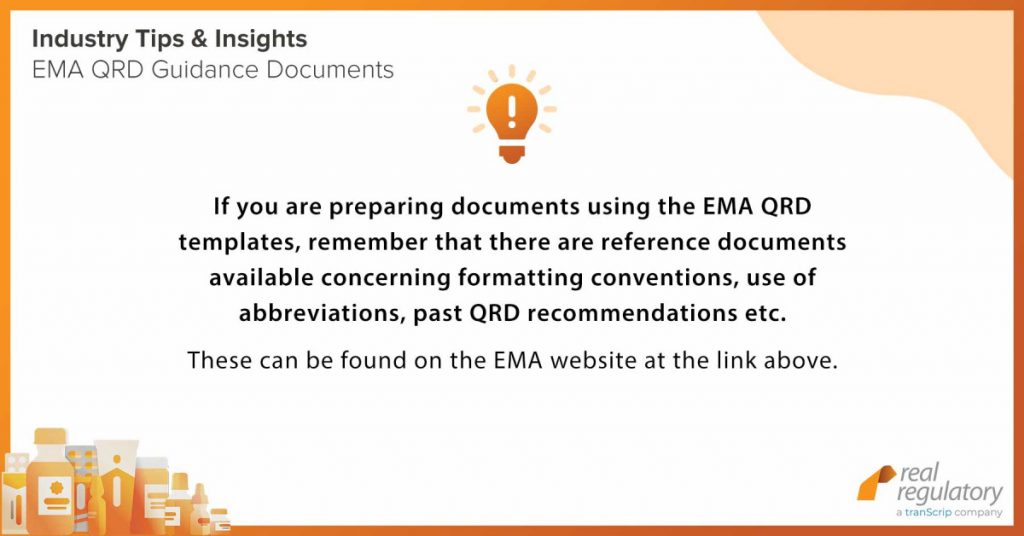
Last week’s round -up;
10-21 January 2022
Ph. Eur. Supplement 10.8 Implementation – Notification for CEP holders
Supplement 10.8 of the Ph. Eur. is now available and CEP Holders are invited to update their applications according to the revised monographs that will be implemented on the 1st July 2022. 16 revised Ph. Eur. monographs are now available including texts for ‘Calcium gluconate for injection’ and ‘Cholecalciferol concentrate (powder form)’. The article linked below provides a full list of the revised monographs as well as instructions for CEP holders and a description of information that should be submitted to the EDQM depending on the classification of the updates made to the monograph.
https://bit.ly/RealCMC-3tK6ad0
Manufacturers object to provisions in FDA’s microbiological quality guidance
An industry trade group and several manufacturers are calling for revisions to the FDA’s draft guidance on microbiological quality considerations for non-sterile drugs (NSDs). The draft guidance was designed to help manufacturers control microbiological contamination of their NSDs and stems from the Agency’s concerns over a high number of adverse events and recalls associated with contaminated products, including Burkholderia cepacia complex (BCC) in non-sterile water-based drug products. According to one manufacturer, one of the main issues with the guidance is a recommendation for the periodical identification of microorganisms in manufacturing facilities, which would be a “significant new requirement” that is not necessary for NSDs and which would be unsustainable. Another stakeholder has said that the new provision calling for manufacturers to test potential objectionable organisms for each nonsterile product, is not practical. Another issue brought up by the industry is that the draft FDA guideline is not aligned with the ICH Q7 guideline on APIs as the former calls for microbiological testing of components such as APIs and excipients, while the Q7 guidance does not. Further comments from stakeholders may be found in the RAPS article below.
https://bit.ly/RealCMC-3txYMl3
Revised ICH Q9 guideline to improve risk assessments
The ICH has issued a revised ICH Q9(R1) guideline that aims to address the shortcomings of the current guideline by providing “more scientific and robust applications of quality risk management principles” leading to “fewer quality defects and recalls” and reduced costs for the pharmaceutical industry.
The revised Q9 guideline is intended to address four shortcomings of the current version:
· High levels of subjectivity in risk assessments and in QRM outputs
· Failure to adequately manage supply chain and product availability risks
· Lack of understanding as to what constitutes formality in QRM work
· Lack of clarity on risk-based decision making The revision includes new text which acknowledges that some degree of subjectivity in QRM is unavoidable while offering methods to reduce or control subjectivity.
The document also includes a new section on formality in quality risk management and contains new text on the role of QRM in addressing product availability risks. The revised guideline is open for public consultation until the 15th March 2022.
https://bit.ly/RealCMC-34Ncoym
Phthalates
Phthalates are commonly used as softeners to make plastics more flexible and durable. They can also be found in adhesives, sealants, paints, rubber materials, wires and cables, flooring, packaging, food contact materials, medical devices and sports equipment. Several ortho-phthalates may have endocrine effects and may affect the sexual development of boys which can lead to infertility in adults. Some phthalates are also harmful to the environment. From the 7th July 2020 the use of phthalates has been restricted in the EU/EEA. These restrictions are estimated to save approximately 2000 boys per year from impaired fertility. The Candidate List of substances of very high concern (SVHC) contains several ortho-phthalates. Manufacturers and importers must notify the ECHA if their products contain a substance on the list within six months after inclusion of the substance in the list. 14 phthalates are also on the REACH Authorisation List. Use of substances on the list will be prohibited after a given date unless the EC authorises the company to continue its use. Prior to applying for authorization, companies also need to demonstrate that the use of the substance is controlled, that there are no suitable alternatives and that the benefits of continued use exceed the risks.
https://bit.ly/RealCMC-3A0iOFP
FDA: Risk of benzene contamination in certain drugs
The FDA has alerted drug manufacturers to the risk of benzene contamination in certain drugs and is currently evaluating the root cause of contamination. Benzene is a known human carcinogen that causes leukaemia and other blood disorders. In pharmaceuticals, inactive ingredients such as carbomers (thickening agents), isobutane (a spray propellant), or other drug components made from hydrocarbons may be potential sources of benzene. The Agency is advising manufacturers to conduct risk assessments to evaluate the possible presence of benzene in their drug products and components, with a special focus on ingredients that are hydrocarbons or are manufactured with benzene or other hydrocarbons. According to ICH Q3C, benzene is classified as a Class I solvent and should not be used in the manufacture of drug substances, excipients, or drug products because of its unacceptable toxicity. However, the guidance does allow for limited cases where the presence of benzene may be tolerated up to a level of 2 ppm, unless otherwise justified. The article linked below provides information on how manufacturers should contact the FDA if benzene is detected in their drug products (including products that are already in distribution). It also contains information that the Agency may request during follow up.
https://bit.ly/RealCMC-3K8p435
(more…)
Last week’s round -up;
03-07 January 2022
All you ever wanted to know about Ph. Eur. procedure 4 but never dared to ask
The EDQM has released a new document, ‘Procedure 4 (P4) – Everything you always wanted to know’, intended to help stakeholders understand the advantages of applying for monograph elaboration via this route. Procedure 4 monograph elaboration applies to active substances (and corresponding medicinal products) or excipients present in medicinal products that are still under patent or single source, provided that the medicinal product has been approved in at least one member state of the pharmacopoeial convention. It also applies to monographs on biotherapeutics as elaborated by the P4bio Working Party Advantages of P4 elaboration are: 1. Direct contact with the EDQM. 2. Regular updates during the elaboration process / full transparency. 3. Specifications as approved by the licensing authorities are unchanged. 4. A CEP can be requested immediately after adoption of the new monograph.
https://bit.ly/RealCMC-3G4rKfD
More clarity on ICH continuous manufacturing guideline requested
Several industry trade associations have requested more clarity on the ICH Q13 guideline on continuous manufacturing (CM), which covers CM of drug substances and drug products, including chemical entities and therapeutic proteins. Stakeholders have asked for clarity on what constitutes a state of control for a CM process, the scope of the guideline, and the definition of a batch size. More clarity on whether the principles in the guideline also apply to ATMPs has been requested. A stakeholder has also suggested that an example of a CM process being in a “state of control” should be provided as this would help in demonstrating when a state of control has been achieved. It has also been suggested that the definition of a batch should be expanded to include additional examples. Another stakeholder has suggested that the section of the guideline on non-conforming material or waste in CM should be revised, as manufacturing waste has not been a significant issue in CM. It has also been suggested that the guideline should make a clearer distinction between CM of small molecule drugs and biologics, since regulatory review, inspection, and management of post-launch process changes can differ significantly.
https://bit.ly/RealCMC-3t0lNNh
New FDA Guidance on the Inspection of Injectable Products for Visible Particulates
The FDA has released a new draft guidance on the Inspection of Injectable Products for Visible Particulates – Guidance for Industry. The draft guidance focusses on the development and implementation of a holistic, risk-based approach to visible particulate control that incorporates product development, manufacturing controls, visual inspection techniques, particulate identification, investigation, and corrective actions designed to assess, correct, and prevent the risk of visible particulate contamination. The guidance also clarifies that compliance with an applicable USP compendial standard alone is not generally sufficient for meeting the current GMP requirements for the manufacture of injectable products. However, the guidance does not cover subvisible particulates or physical defects that products are typically inspected for along with inspection for visible particulates such as container integrity flaws, fill volume, appearance of lyophilized cake/suspension solids.
https://bit.ly/RealCMC-31jqlTo
(more…)
Last week’s round -up;
18-22 October 2021
Final EMA feedback on Titanium Dioxide
The EMA has issued its final feedback to the EU Commission request to evaluate the impact on medicinal products of the removal of titanium dioxide from the list of authorised food additives. The request from the Commission was triggered by the opinion of the European Food Safety Authority (EFSA), published in May 2021: “that on the basis of all currently available evidence along with all uncertainties, in particular the fact that genotoxicity could not be ruled out, titanium dioxide can no longer be considered as safe when used as a food additive”. The Commission requested the EMA’s analysis in order to define the technical purpose of titanium dioxide in medicinal products, the feasibility of alternatives to replace it without negatively impacting the quality, safety and efficacy of medicines, and if confirmed, considerations to be taken into account to define a transition period for phasing out this excipient. The EMA concluded that the feasibility of replacing titanium dioxide cannot be confirmed at this stage, and an acceptable transition period is currently difficult to envisage or estimate.
https://bit.ly/RealCMC-3aXr7H3
ICH guideline proposes daily limits for seven mutagenic impurities
The International Council for Harmonization (ICH) issued its M7(R2) guideline for public consultation. The guideline sets new permitted daily exposure (PDE) limits for seven DNA-reactive substances to limit their carcinogenic risk. The guideline contains 21 mutagenic impurities including the following 7 newly added impurities with their PDE levels: · Acetaldehyde: (oral) 2 mcg/day – 185 mcg/day for all other routes · 1,2 Dibromoethane: 2 mcg/day · Epichlorohydrin: 3 mcg/day · Ethyl bromide: 32 mcg/day · Formaldehyde: (inhalation) 8 mcg or 215 parts per billion/day; all other routes 10 mg/day · Styrene: 154 mcg/day · Vinyl acetate PDE: (oral) 2 mcg/day – 758 mcg/day for all other routes The guideline has now been split up into one main guideline and an addendum containing PDEs or acceptable intake (AI) levels for each impurity, along with their monographs. It provides rationales for including the new mutagenic impurities.
https://bit.ly/RealCMC-3C2AXTQ
New partnership between HRA and ISRCTN for public registration of UK clinical trials
The UK Health Research Authority (HRA) has announced a partnership with the ISRCTN primary clinical trial registry for the automatic public registration of clinical trials. From 2022, the HRA will register clinical trials in the UK which receive a favourable ethics opinion with ISRCTN directly, using data from the HRA’s systems, so research sponsors and researchers will no longer need to apply for public registration separately. Further details are available on the HRA and ISRCTN registry websites.
Guidance links:
https://bit.ly/RRL-3vGXYJC
https://bit.ly/RRL-2ZjncBw
Dasatinib product-specific bioequivalence guidance
The EMA has issued a revised product-specific bioequivalence guidance for Dasatinib film-coated tablets 20, 50, 70, 80, 100 & 140 mg and suspension 10 mg/ml. This revised product-specific guidance for dasatinib includes the additional requirement for a fed study and the requirements for a suspension.
https://bit.ly/3cLNY7P
New Oxygen (98%) Ph. Eur. monograph
A new draft Ph. Eur. monograph for Oxygen (98%) has been published for comment in Pharmeuropa 33.4. The draft monograph is the outcome of a thorough examination of feedback from regulators, hospital pharmacists, industry representatives (gas producers and producers of oxygen generating equipment) and academics. The draft monograph is available for comment until 31st December 2021.
https://bit.ly/RealCMC-3n2F2RC
(more…)
Last week’s round -up;
16-20 August 2021
ATMPs containing genetically modified cells – draft EMA guidance on PI for consultation
The EMA has published for consultation a draft guideline detailing the information to be included in the Summary of Products Characteristics (SmPC), labelling and packaging leaflet for Advanced Therapy Medicinal Products (ATMPs) containing genetically modified cells. The purpose is to provide applicants and regulators with harmonised guidance on the requirements for the Product Information (PI); the consultation period ends on 31st October 2021.
Guidance link: https://lnkd.in/e8rPmDr
The UK’s NICE has launched a consultation on Review of Methods and Processes for HTA Evaluation
NICE has just published a consultation on proposals for change as part of its methods and processes review. The consultation period is open for eight weeks. As newer more advanced technologies become available the outcome is intended to help simplify NICE’s approach and to allow more flexible decision-making. All while continuing to be robust and responsive.
Full details of the consultation and a short video outlining the proposed changes, can be found here: https://lnkd.in/ecXED6rE
New ICH Q13 continuous manufacturing guideline
The ICH has released a new draft ICH Q13 guideline on continuous manufacturing of drug substances and drug products, which is open for public consultation in Europe until the 20th December 2021. The new guideline covers continuous manufacturing (CM) of drug substances and drug products for both chemical entities and therapeutic proteins and may also apply to other biological/ biotechnological entities. It provides guidance on CM for new products, including generics and biosimilars, and also on the conversion of batch manufacturing to CM for products that are already on the market. The guidance focuses on the integrated aspects of a CM system in which two or more unit operations are directly connected, therefore, any changes made in a unit operation of CM may have a direct and often immediate impact on downstream and upstream unit operations. The main body of the guideline covers fundamental aspects of CM that are not specific to technology, dosage form, or molecule type. The annexes contain illustrative examples and considerations specific to certain modalities (e.g. chemical entities, therapeutic proteins), technologies, and production methods (e.g. integration of drug substance and drug product manufacturing).
https://bit.ly/RealCMC-3z32DX4
Update on replacement for EMA electronic application forms (eAFs)
Further details have been released for the Digital Application Dataset Integration (DADI) project to replace the current pdf-based human and veterinary medicine eAFs, from 2022 onwards, with web-based forms on a portal. A summary presentation of the project, an updated questions and answers document, and a features list for the human variations form, are available on the eSubmission website.
Website link: https://lnkd.in/gbjpWDr
Clarity sought from the US FDA on ICH Q12 implementation
Following a public consultation, the US FDA has received several comments on its draft guidance on how ICH Q12 is to be implemented in the US. The ICH Q12 guideline facilitates the management of postapproval CMC changes for new and marketed pharmaceuticals and drug substances. Some members of pharmaceutical industry have asked the FDA to align reporting categories with the ICH Q12 guideline on postapproval changes. Other members seek clarity on how manufacturers can use postapproval change management protocols (PACMPs) to support a lower reporting category. Clarity has also been requested on whether the new guidance replaces the Agency’s guidance on established conditions (ECs) that was published in 2015 or whether the two guidelines should be used in conjunction.
https://bit.ly/RealCMC-3jWEXgS
(more…)
Last week’s round -up;
26-30 July 2021
EMA issues new draft guidance on core SmPC, labelling and package leaflet for ATMPS
EMA has opened up a consultation from 30th July 2021 through to 31st of Oct 2021 on a new guidance for ATMPS containing genetically modified cells. The guideline seeks to describe the information to be included in the summary of products characteristics (SmPC), labelling and package leaflet and it is intended to apply to allogeneic or autologous, including viral vector modified and genome edited cells. Examples for Chimeric Antigen Receptor T (CAR-T) cells and Cluster of Differentiation 34+ (CD34+) modified cells are given in more detail. These can be used as model wording for other types of genetically modified cells.
The draft guidance can be found here: https://lnkd.in/e8rPmDr
New ICH Q13 continuous manufacturing guideline
The ICH has released a new draft ICH Q13 guideline on continuous manufacturing of drug substances and drug products, which is open for public consultation. The new draft ICH Q13 consists of a main guideline and five annexes. The main guideline covers three different models of continuous manufacturing, and reviews control strategy and regulatory considerations. The three models of continuous manufacturing covered by the guideline include: 1. A combination of approaches in which some unit operations operate in a batch mode while others operate in a continuous mode 2. A model where all unit operations of a drug substance or drug product manufacturing processes are integrated and operate in a continuous mode 3. An approach in which the drug substance and drug product unit operations are integrated across the boundary between drug substance and drug product to form a single continuous manufacturing process. The annexes cover continuous manufacturing of drug substances, as well as continuous manufacturing of drug products, therapeutic protein drug substances, integrated drug substances and drug products and perspectives for managing disturbances.
https://bit.ly/RealCMC-3rGnsoB
Attention CEP Holders: New Draft Ph. Eur. Monographs
The following fifteen draft Ph. Eur. monographs, for which CEPs have been granted, have been published in Pharmeuropa 33.3:
• Amylmetacresol
• Calcium acetate
• Calcium ascorbate
• Cholecalciferol
• Clodronate disodium tetrahydrate
• Diclazuril for veterinary use
• Estriol
• Isoniazid
• Ondansetron hydrochloride dihydrate
• Pemetrexed disodium heptahydrate
• Propylthiouracil
• Raltegravir potassium
• RRR-alpha-Tocopheryl acetate
• Thiamine nitrate
• Tibolone
The EDQM has therefore asked CEP holders to consult the list of substances and provide feedback on the draft monographs before the 30th September 2021.
https://bit.ly/RealCMC-3iaoC8z
EMA issues new guidance on quality documentation required for medicinal products when used with a medical device
The EMA has finally issued new guidance that focuses on product-specific quality aspects of a medical device, or device part, that may have an impact on the quality, safety and/or efficacy (and hence overall benefit/risk determination) of a medicinal product.
The guidance covers; Medicinal products where the medical device and/or device part form an integral product that is not reusable; Medicinal products that are co-packaged with a device; Medicinal products that are required to be used with a specific medical device.
The guidance which is effective from 1st Jan2022, can be found here :
https://www.ema.europa.eu/en/documents/scientific-guideline/guideline-quality-documentation-medicinal-products-when-used-medical-device-first-version_en.pdf
EMA has updated pre-authorisation guidance for users of the centralised procedure
By the end of September 2021 any new sites and organisations to be registered for a Medicinal Product Marketing Authorisation will have to have to be registered in the EMA’s Organisation Management Service (OMS). This will be mandatory and EMA is keen to stress the importance of this site registration before the regulatory submission in order to avoid any delay in the start of the MAA process. If not applicants will be requested to register the site(s)/organisations during validation and prior to the start of the procedure. The guidance now also give detail instructions on the withdrawal of a request for submission of an MAA to EMA, if the applicant no longer wishes to submit an MAA.
The latest document with full details of the pre-submission guidance from EMA can be found here: https://lnkd.in/g5YcXxj
Upcoming ICH Analytical Guidelines
The ICH intends to release two new guidelines, ICH Q14 and ICH Q2(R2), which should allow manufacturers to switch analytical methods for testing medicines post-approval more easily and allow for better lifecycle management. The upcoming ICH Q14 guideline will harmonize scientific approaches to analytical procedure development to allow for a more efficient, sound scientific and risk-based approval. The ICH Q2(R2) guideline will replace the current ICH Q2(R1) guideline and will include some of the newer analytical procedures. Together the two forthcoming ICH guidelines should create a harmonized performance-based approach for allowing analytical method changes. The new ICH guidelines should be available for public consultation in December 2021.
https://bit.ly/RealCMC-3y8O3wU
(more…)
June 2021
Real Regulatory Tips and Insights
The tips we published in June 2021 are collected here, for convenience. Make sure you follow Real Regulatory Ltd and Real CMC for regulatory news, reports and hints.
IRIS
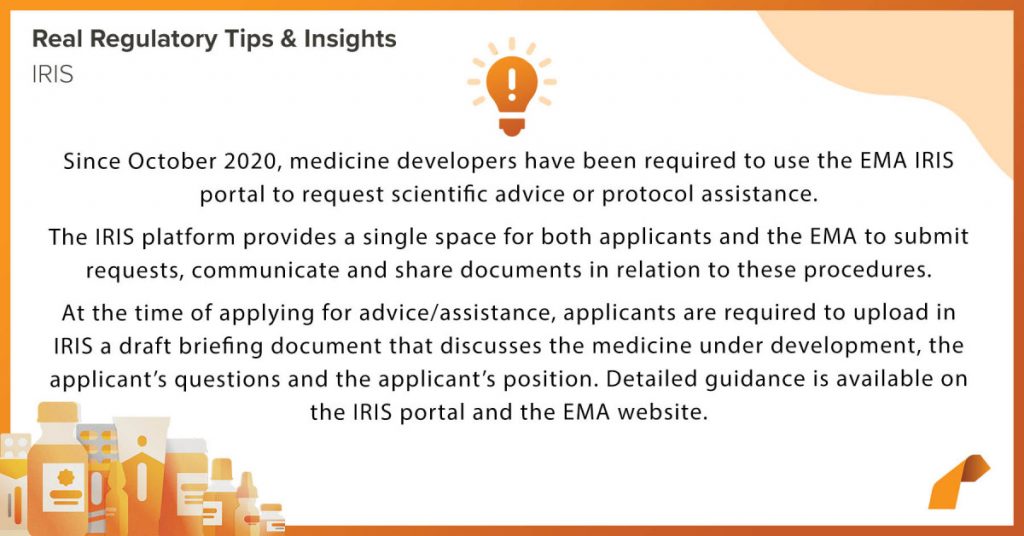
Clinical Study Reports and the ICH Template
https://database.ich.org/sites/default/files/E3_Q%26As_R1_Q%26As.pdf
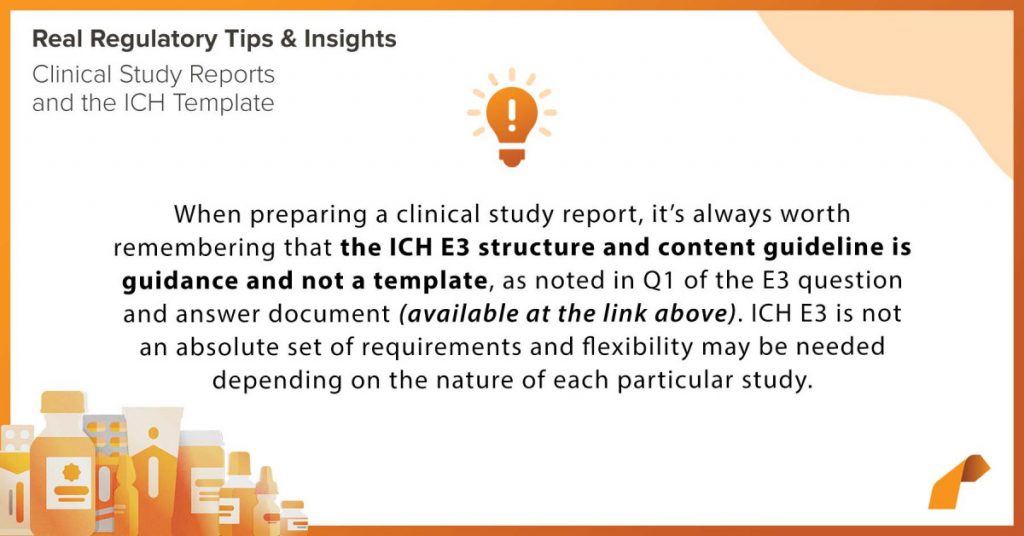
MA Holder and Delegated Activities
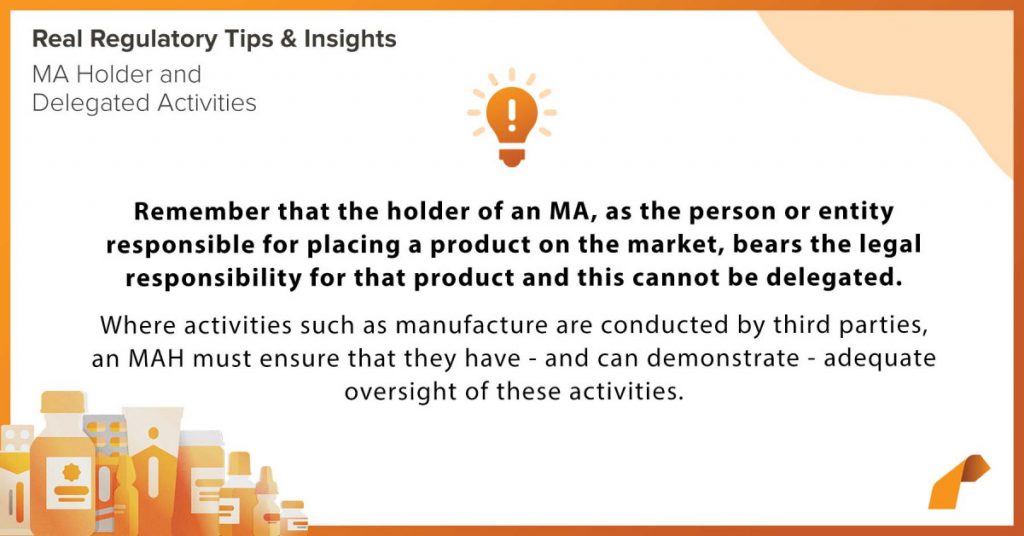
November 2020
Real Regulatory Tips and Insights
The tips we published in November 2020 are collected here, for convenience. Make sure you follow Real Regulatory Ltd and Real CMC for regulatory news, reports and hints.
Clinical Trials: DSURs
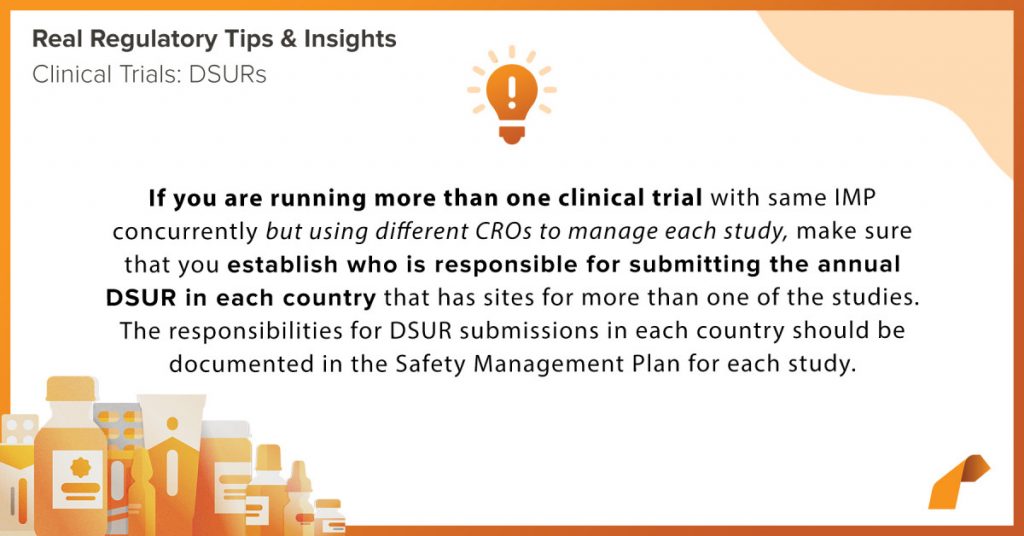
Editorial Changes
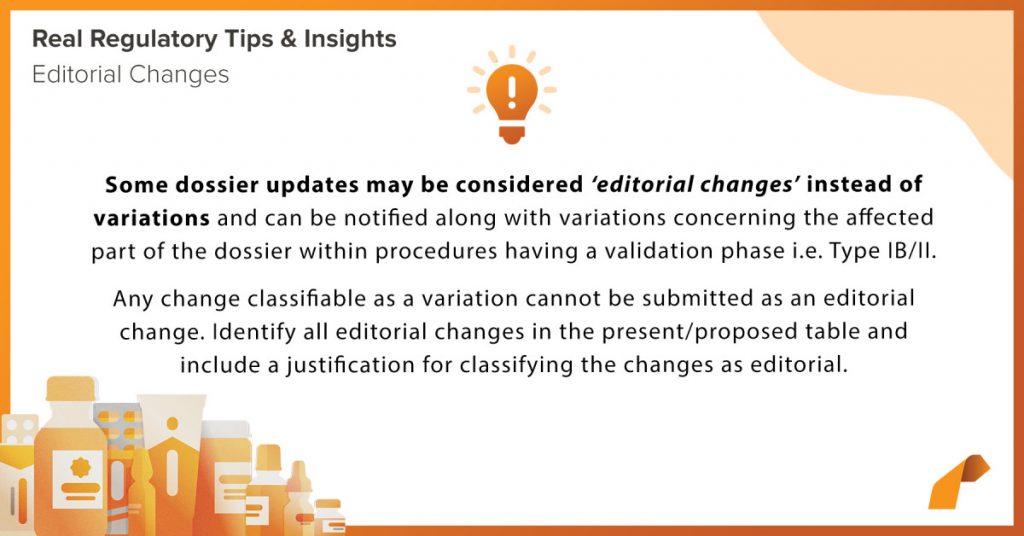
EudraCT Results Upload
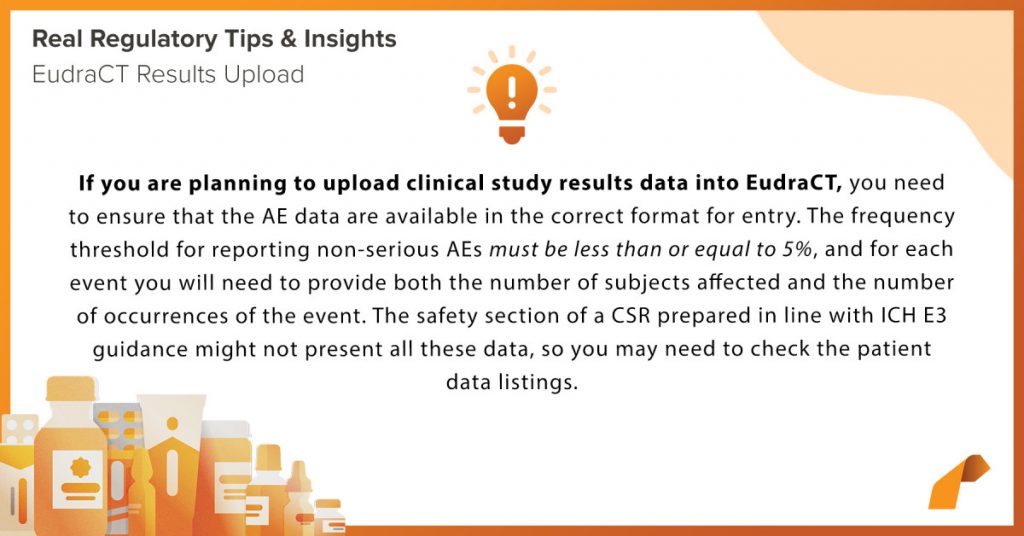
QP Declarations
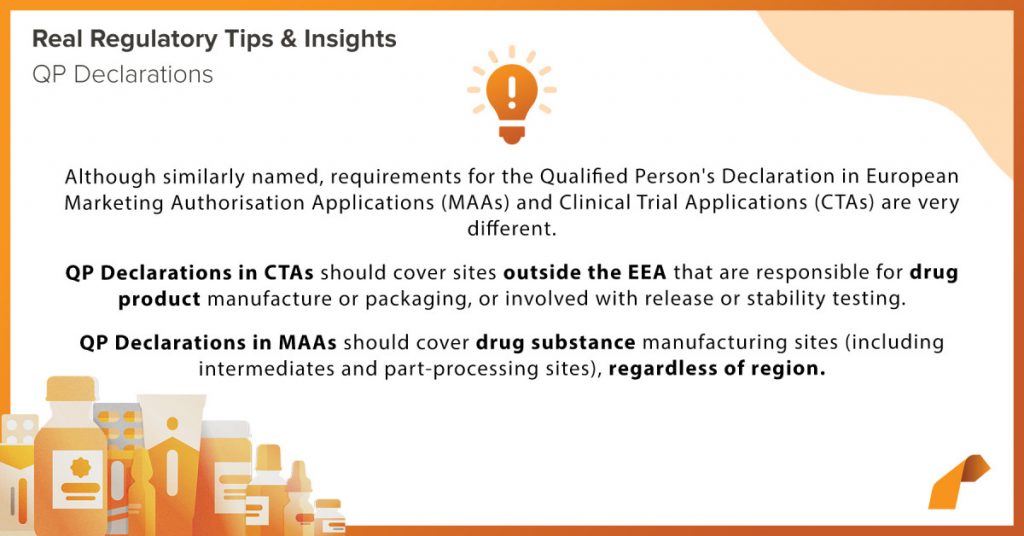
For previous monthly round-ups, you can follow these links:
October 2020 Real Regulatory Tips & Insights Round-Up: https://www.realregulatory.com/october-2020-rrl-regulatory-tips-and-insights/
September 2020 Real Regulatory Tips & Insights Round-Up: https://www.realregulatory.com/september-2020-rrl-regulatory-tips-and-insights/
August 2020 Real Regulatory Tips & Insights Round-Up: https://www.realregulatory.com/august-2020-rrl-regulatory-tips-and-insights/
Last week’s round-up;
06-10 July 2020
167th session of the Ph. Eur. Commission
The Ph. Eur. Commission held its 167th session on the 23 June 2020. Due to restrictions imposed by the COVID-19 pandemic the session was held online to ensure continuity of the work of the Ph. Eur. Commission. During the session, the Commission adopted 75 texts for publication in Ph. Eur. Supplement 10.5, including 64 revised texts and 11 new texts, including a revised text on Parenteral Preparations (0520) which had been significantly modified to update the requirements for testing for visible and subvisible particles, the definitions given and the uniformity requirements. The adopted texts will come into effect on the 1st July 2021. The next session of the Ph. Eur. Commission will take place in November 2020.
https://bit.ly/RealCMC-2ZgUj6w
EC Health Safety Committee (HSC) meeting summary report
The ECs HSC has issued a brief summary report following its recent audio meeting. In it the EC presented the revised vaccination plan blueprint for COVID-19, including major points on objectives, vaccination coverage, priority groups and number of doses needed for the EU, as well as comments received from the HSC. Other main topics included discussions on risk assessment for resurgence of the virus, exit strategies for lockdowns, impact of deconfinement measure and superspreading events.
The report can be found under this link: https://lnkd.in/ehC-WCY
Q&A on ICH M7
The EMA has released a questions & answers document on ICH guideline M7 on assessment and control of DNA reactive (mutagenic) impurities in pharmaceuticals to limit potential carcinogenic risk (step 2b). This document is intended to provide additional clarification and to promote convergence and improve harmonization of the considerations for assessment and control of DNA reactive (mutagenic) impurities. It also provides further insight into the information that should be provided during drug development, marketing authorization applications and/or Master Files. The EMA’s questions & answers document is open for public consultation until the 3rd October 2020.
https://bit.ly/RealCMC-2CnPj76
EUnetHTA launches its COVID-19 related repository of publications and outputs
EUnetHTA, the European Network for Health Technology Assessment, has just launched a repository of related material for the COVID-19 pandemic. This responds to the EC communication on “Guidelines on COVID-19 in vitro diagnostic tests and their performance”, and is linked to the database recently set up by JRC devoted to testing devices. The repository gathers publications by EUnetHTA and by HTA organisations on testing methods and devices, treatment options, and other public health measures relevant to COVID-19.
A link the repository can be found here: https://lnkd.in/eUvnJUV
EMA issues a new medicines agency network strategy to 2025.
Recognising that the current challenges we face go well beyond the remit of medicines regulation, and will need to be addressed by the EU and its Member States as a whole and individually. Learning from this experience presents an opportunity to shape the future role of medicines regulation nationally and at the EU level, and enhance the partnership approaches that we need to ensure that we are proactively positioned to deal with similar emergencies.A new European medicines agencies network strategy to 2025 has been issued by EMA setting the direction for the Network’s response. It focuses on areas such as; Availability and accessibility of medicines; Data analytics, digital tools and digital transformation; Innovation; Antimicrobial resistance and other emerging health threats; Supply chain challenges; Sustainability of the Network and operational excellence.
The document and a public consultation on the strategy have been launched on the EMA site under this link https://lnkd.in/e3PcWcD
Lapatinib product-specific bioequivalence guidance
The second draft of the EMA’s Lapatinib film-coated tablet 250 mg product-specific bioequivalence guidance is available for public consultation until the 30th September 2020. A second public consultation of the guidance is underway as the first draft was significantly revised in response to the comments received during the first public consultation.
https://bit.ly/RealCMC-2ZOgRuu
EMA issues first edition of the Clinical Trial Information Systems (CTIS) Newsletter
As reported last week, EMA has now issued the first edition of the CTIS Newsletter as we move towards the go-live of this eagerly awaited IT system. It is envisaged to be issued on a twice yearly basis.
The newsletter in full can be found under this link https://lnkd.in/ec9sBH6
Ph. Eur. updates
The following information regarding Ph. Eur. Supplement 10.3 has been published: · The contents of the supplement. The document includes a list of new and revised texts which will be implemented by the 1st January 2021, a list of corrected texts which should be taken into account by the 31st August 2020, as well as texts whose titles have changed and deleted texts. · New reagents have been added to the list of reagents published in chapter 4 of the Ph. Eur. · Comments concerning revised texts published in Supplement 10.3. This document contains details of the technical modifications that have been made to the revised texts.
Further details concerning these Ph. Eur. updates may be viewed here: https://bit.ly/RealCMC-38zsVEa
EMA endorsement of joint statement on prioritisation of COVID-19 clinical trials
The EMA has endorsed a joint statement on prioritisation of COVID-19 clinical trials published by the International Coalition of Medicines Regulatory Authorities (ICMRA). Its underlying aim is to step up global collaboration, facilitation and evaluation of COVID-19 treatments. Within the statement, key characteristics of clinical trials that enable accelerated approval are described. These include robust methodology and endpoints, realistic recruitment and completion capacity, and testing of repurposed drugs or those at advanced stages of development. Treatments addressing the most severe complications of COVID-19 and those with simpler routes of administration and treatment duration are also highlighted for priority.
https://lnkd.in/g9aZbu3 (more…)














